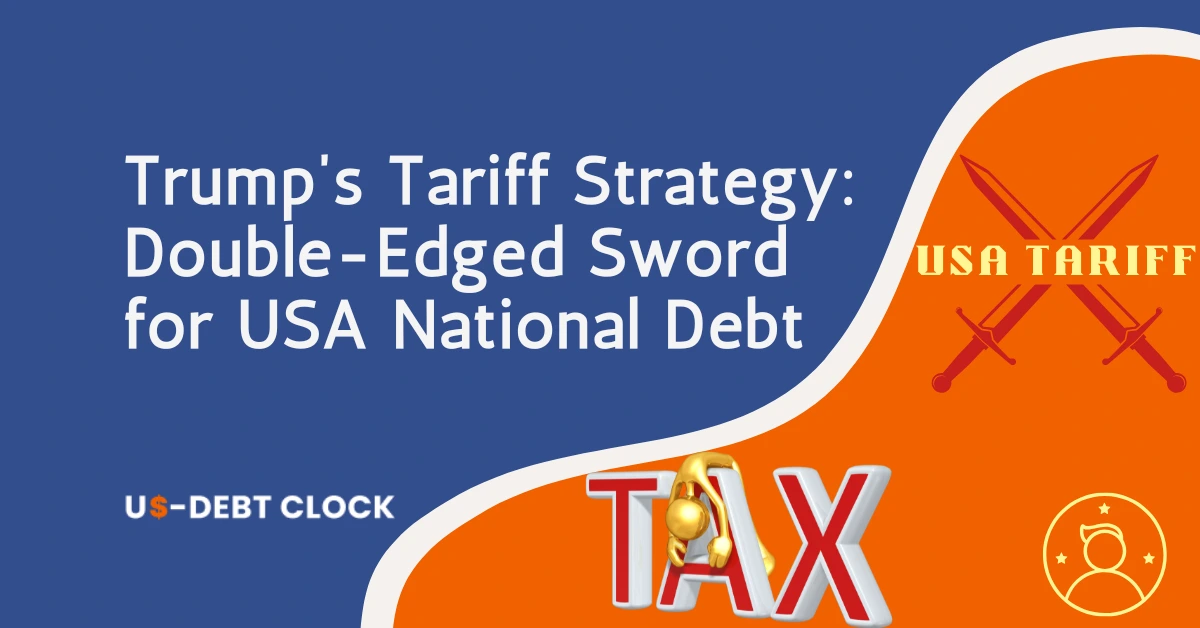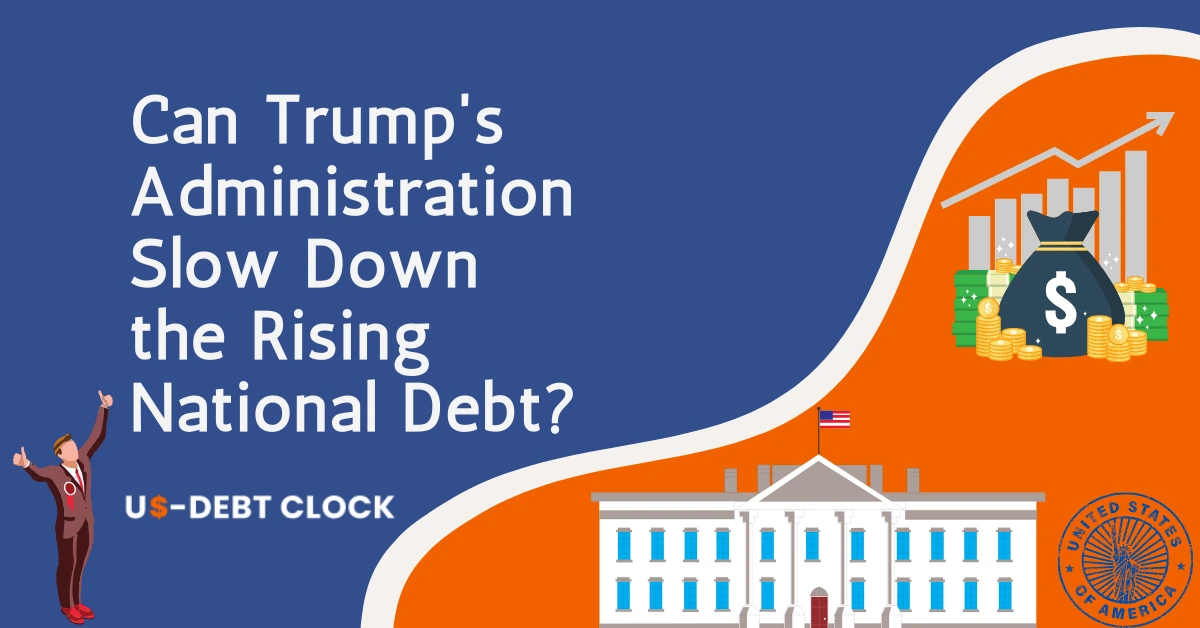The national US Debt has risen beyond $36 trillion as of the 1st quarter of 2025 and is still growing. Increased indebtedness has implications for future interest rates, inflation, and stability in domestic and global markets.
It must, therefore, be understood for investing, since debt influences financial markets and needs proper risk management with suitable investment strategies.
The debt-related pressures have given rise to movements in bond yields, exchange rates, and flows of capital. These movements, in turn, can have an impact on the performance of portfolio assets.
Here, we outline the specific challenges arising from U.S. indebtedness for investment and investment responses to help mitigate risks and achieve long-term objectives.
1. U.S. Debt Contributes to Market Volatility
The Challenge
Higher government debt usually means more issuance of U.S. Treasury securities, putting upward pressure on yields. In case of fast yield fluctuations, markets tend to behave with volatility.
This has been happening very clearly during the debt ceiling discussions, especially during periods of uncertainty regarding fiscal policy. A good example is 2011 and 2023, where political disagreements over the debt ceiling caused very short-lived disruptions in the market, in which Treasury yields were pushed up.
Higher yields also increase the cost of borrowing for businesses and consumers and can act as a brake on economic activity, thus negatively impacting earnings and stock valuations. With this change, it is also a time of increased market volatility as investors start trying to incorporate these changes into the price.
The Solution
Even if an investor follows a flexible portfolio strategy, this will, in some sense, insulate against market vagaries. Adjusting market allocations depending on current conditions instead of sticking with a predetermined static asset mix is one example.
A good diversification policy would employ asset classes with low correlation to equities (like commodities, short-duration bonds, or absolute return strategies) as a hedge against instability.
Investors may also consider active exposure-to-volatility-type strategies, e.g., managed futures or tactical asset allocation models, that consider changes in market direction or changes in risk. In practice, these aim to maintain a balanced portfolio that can withstand abrupt shifts in the marketplace over time.
2. Inflation Risk from Continued Deficit Spending
The Challenge
Long-term structural deficit financing results in inflation, especially when large consumer demand and tight labor markets accompany it. When inflation increases, it eats away purchasing power of returns on investments, particularly from fixed-income assets and cash holdings.
From 2021 to 2023, an inflation level higher than the target was experienced in the U.S., prompting the Federal Reserve to hike interest rates significantly. The broad impact of the increased rates applied to bonds had effects on housing markets and valuations of equities.
The Solution
The best investment strategy that protects against inflation is to add assets that usually do well in inflation. Such assets include Treasury Inflation Protected Securities (TIPS), which adjust the principal for changes in the Consumer Price Index to preserve real returns.
Real assets such as commodities and infrastructure normally preserve or appreciate during inflationary periods. Companies that are in sectors such as energy, materials, or utilities equities are also regarded as more resilient since the companies within those industries tend to have more pricing power.
In case of a few real estate investment trusts, particularly those with lease structures tied to inflation indexation, investors can potentially enjoy similar benefits. The objective is to keep the real returns by investing in those assets that are less negatively impacted by price increases.
3. Currency Risk and Shifting Global Investment Patterns
The Problem
High levels of debt affect the USD negatively, particularly when it invites doubts in the minds of investors on the long-run sustainability of the U.S fiscal policy.
A weak dollar has mixed effects; it makes U.S. exports competitive but simultaneously reduces the real dollar-denominated investments for international investors and complicates cross-border capital flow.
At the same time, capital sometimes controls itself in its shift toward nations with low debts or high growth. The most relevant example of this is emerging markets that investors show interest in to have better returns despite increased risk.
The Solution
Increased exposure to global markets is what investors will do when given such an environment, paying close attention to both opportunities and risks. International equities and bonds may particularly diversify, but investments would also be subject to currency risks that could be alleviated by currency-hedged funds or derivatives.
Fundamentally, investing internationally concerns understanding the economic fundamentals, fiscal policies, and actions by central banks. For instance, improved trade balances backed by sound monetary policy would probably be better positioned for capital attraction against high global debt.
4. Political Risk and Fiscal Policy Uncertainty
The Challenge
U.S. political gridlock-debt ceiling negotiations, and budget approvals have become a repetitive concern for financial markets. These events can delay the appropriation of funds to the government, create uncertainty, and lead to credit rating downgrades like the one in 2011 or the next in 2023.
Such uncertainty directly puts pressure on investor confidence, which in turn raises borrowing costs. This also causes short-lived price movements in Treasuries, equities, and the U.S. dollar.
For long-term investors, these political events present a challenge for planning and risk management.
The Solution
Investors should assess their portfolios periodically for potential response patterns under diversified fiscal scenarios such as budget approval delays or government credit rating evaluations. Stress tests help surface stress points that can inform risk management strategies.
Liquidity in the form of cash or short-term instruments enhances flexibility in times of intense political uncertainty. Hedging strategies-such as protective options or credit spreads-may be considered by investors, as they provide some measure of risk mitigation.
Although one cannot forge absolute certainty in political outcomes, a disciplined approach to contingency planning can help stabilize the entire portfolio.
Conclusion
Upward spiraling levels of American debt have assertively pervaded the market environment. They impact not only government finances but also interest rates, inflation, currency markets, and political stability.
Thus, investors cannot choose to overlook these phenomena in assembling or retooling their portfolios.
The portfolios could respond dynamically to high and rising U.S. debt through methods such as dynamic asset allocation, inflation hedges, truly global diversification, and proper risk management. These methods focus less on predicting future policy decisions and more on ensuring the portfolios perform well under a range of possible outcomes.
Investors should be constantly attuned to these risks and work with the appropriate financial professionals when necessary to ensure that their portfolios are properly positioned. In an environment with high debt, a proactive approach to portfolio management is one of the keys to safeguarding capital and fulfilling the longer-term investment objectives.
FAQs
1. How does rising U.S. debt affect interest rates?
As the government increases borrowings to fund its deficit, more Treasury securities are generally issued. Increased supply will lead to demand everywhere, especially when demand does not keep up. Higher Treasury yields would lead to higher interest rates, providing borrowing costs to businesses and consumers.
2. Can U.S. debt cause a recession?
High levels of debt do not directly cause recessions, but can build up stress on the economy through higher interest rates, diminished investor confidence, or fiscal tightening. When not market confident about debt or there is a political stalemate, that vacillation can slow down growth or cause a recession.
3. Is inflation always tied to government debt?
Not automatically, of course. Inflation is the result of a variety of factors in the economy, including supply chain conditions, labor markets, and monetary policy. But when expansive government borrowing is not backed by economic growth or productivity, then it will lead to inflation by raising demand above what the economy can accommodate.
4. Should I reduce my exposure to U.S. assets, considering the debt situation?
Reducing exposure altogether is rarely recommended. Diversifying the portfolio into international assets, inflation hedges, and low-volatility investments is more advisable. The U.S. is a massive global economy with deep capital markets, yet a balanced exposure can help mitigate risks.
5. How often should I reassess the lasting U.S. debt impact on my investment strategy?
At least once per year or more often in case of much market distress, development of strongly contrasting fiscal policies, or economic shifts. Should debt levels or fiscal policy developments start interfering with key asset classes, adjustments would need to be made for realignment with risk and goals.



